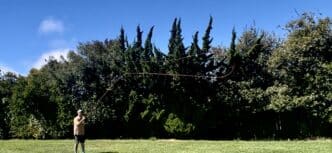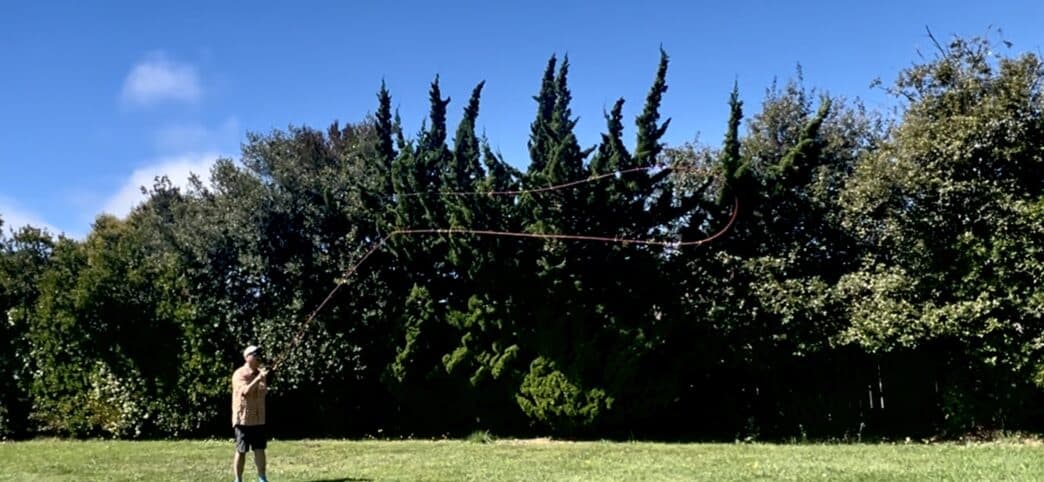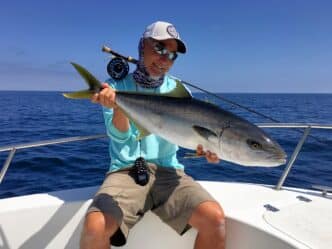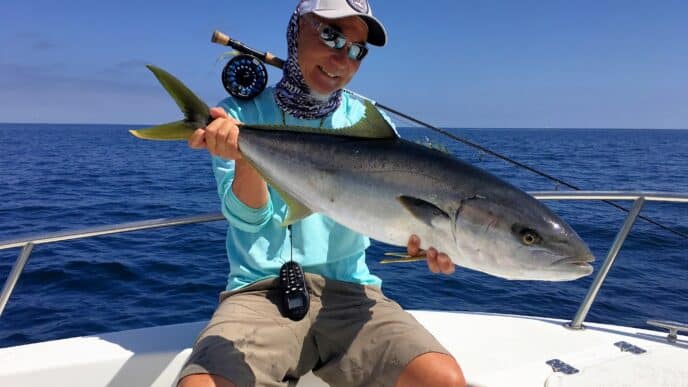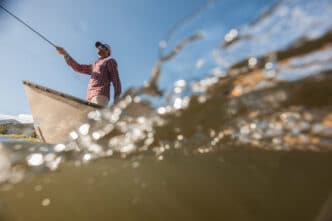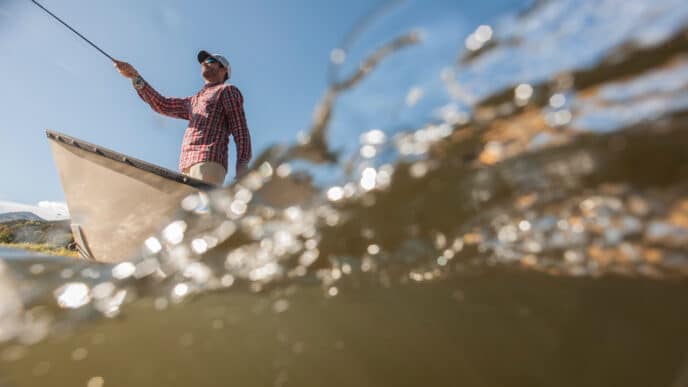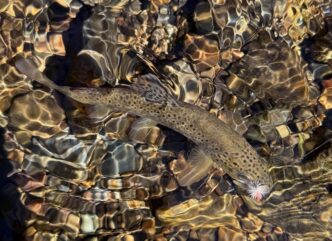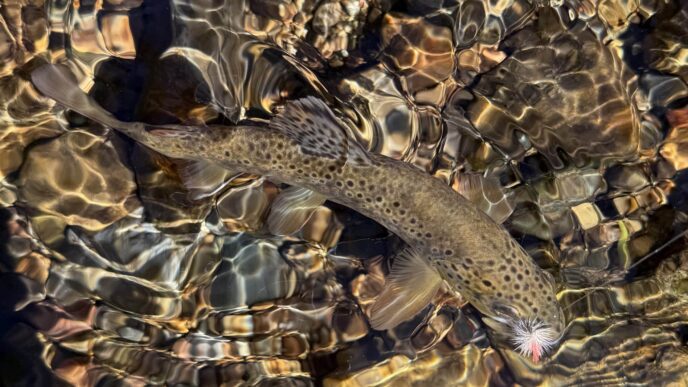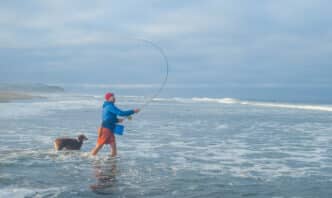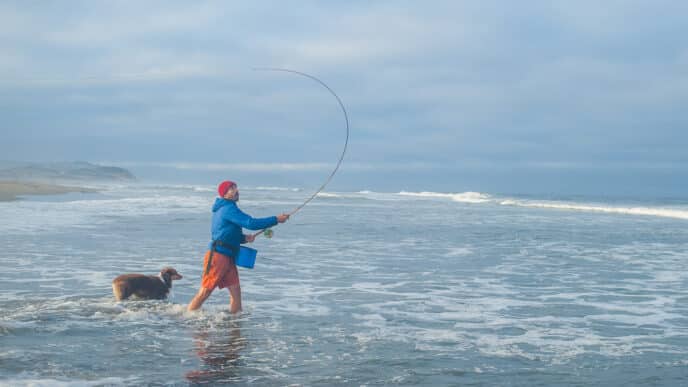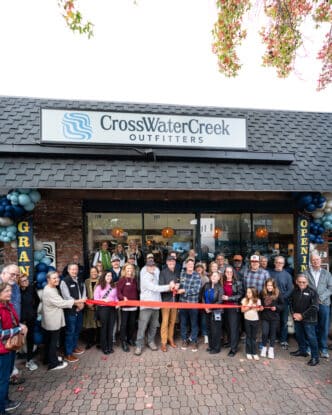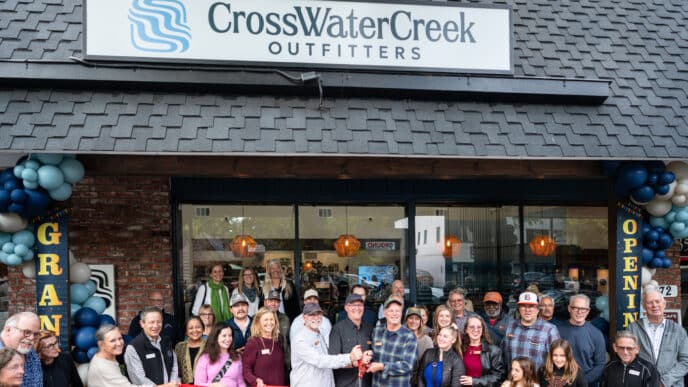Fly fishing is a target sport. Casting dry flies to rising fish or sight fishing saltwater flats? Targets. Fishing nymphs under a bobber or as part of a 3-fly euro rig to submerged feeding fish? Targets. Streamer, Spey, and surf fishing? In my book, those are part aim-and-shoot and part divine intervention since we’re casting flies into where we think there should be fish—until fate smiles down and graces us with a fish. Targets acquired. Praise be, Beyoncé.
Finding success at any target sport, whether it’s hunting, golf, darts, or even bowling, means getting better at putting balls and pointy things in places with some semblance of accuracy. How do you find that elusive precision? The answer, Grasshopper, lies in my childhood piano teacher’s favorite joke, “A tourist in New York City asks a musician playing on the street, ‘How do you get to Carnegie Hall?’ To which the musician replies, ‘Practice! Practice! Practice!’”
I’m lucky that I live close-ish to the Golden Gate Angling & Casting Club (GGACC), highlighted in the California Fly Fisher Summer 2025 issue, nestled in San Francisco’s bucolic Golden Gate Park. The GGACC offers free monthly casting lessons, open to the public, that regularly draw a capacity crowd of people ranging from local fly fishers to tourists sporting shiny new “San Francisco” sweatshirts they likely acquired after receiving the city’s welcome gift of nearly year-round 53 degrees of swarming, bone-chilling fog and, if they’re lucky, a loaf of sourdough bread.
If ever a humbling experience there was, it was several years ago when I showed up for the first time at one of those free casting lessons. After learning that the dozens of attendees would be dispatched into groups based on ability, from Beginner to Advanced, I approached one of the casting instructors, confidently announced I’d been fly fishing for decades, and then smugly asked where the Advanced casters group meets. “Right here,” he said, pointing between us at the sandwich board bearing the word “Advanced”. Note to self: Put on your glasses and then grab your ego hard by the scruff the next time it gets out in front of you.
That’s how my first day at the GGACC started. It ended with a free hot dog lunch(!) after the instructors taught me casts I’d heard of but never used. We learned the kneeling cast & shoot, the wiggle cast… If only we had learned The Hokey Pokey cast ‘cuz I’m told that’s what it’s all about. I left feeling like I had fun and really learned a lot, but the most important thing I learned was that, at best, I was an Advanced Beginner* when it came to casting. All that shameless proclaiming of my decades of fly fishing experience turned out to be pure bluster. The flaccid casts I threw that day were more informative examples of what not to do as an aspiring ribbon dancer on the Olympic Rhythmic Gymnastics team.
The next time I returned to the GGACC ponds for another free casting lesson, I settled in with the Beginner group to learn the foundations of the progression being taught. Break me down and build me up! The journey of a thousand miles begins with a single step—and I showed up with shoes made sticky from being stuffed full of humble pie.
Fast forward a few years and through many more lessons at the GGACC and I’ve made my way to becoming a legit student in the Advanced group—Look, Gepetto! I’m a real boy! Those advanced casts from my first day of flailing as an Advanced Beginner make more sense now that I understand the progression of how to get there. And now that I’ve acquired some confidence in my casting, earned from hours of practice, I can tell you to take the New York City Subway’s N, Q, or R lines to the 57th Street stop if you want to get to Carnegie Hall.
“It is not easy to tell one how to cast. The art must be acquired by practice.”
Charles Orvis (~1883)
Through my efforts to improve, I discovered that casting is one of the aspects I really enjoy about fly fishing. Yeah, catching fish is a lot of fun—always has been. But I love flinging string. I can tamp down the disappointment and frustration of a slow day of fishing if my casting is on point. Making precise casts on a super technical day has me feeling like Babe Ruth pointing to center field in the 1932 World Series. Only I’m pointing to a 6-foot gap in some leafy branches hanging over the edge of a seam about 50 feet away, just past a submerged log, that’s feeding into a slot that looks like it should have a flashing neon “Fish Eat Free!” sign hanging over it.
I spend a lot of time thinking about casting now, which means I’ve become something of an insufferable casting nerd. I’ll practice casting movements while driving in my car or waiting for my morning coffee to brew. I can lose all track of time talking about casting with other casting nerds as we commiserate over the challenges of making a good curve cast. As a bona fide casting nerd, I probably spend more time now thinking about the mechanics and multitude of fly casts out there than I did in junior high school, awash in puberty hormones, thinking about how to impress girls with my mad BMX skillz—but on a 10-speed.
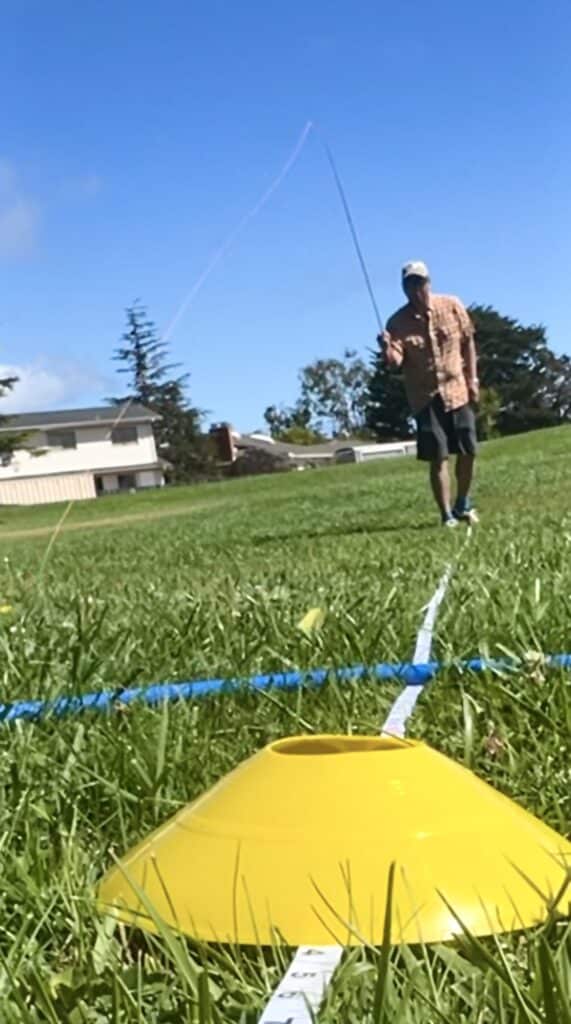
This intensity of focus on casting (my supportive wife would call it “obsessive”) has led me to pursue becoming an FFI Certified Casting Instructor, or at least starting down the road to become one. The catch is, the closest program for me to pursue this dream is at the Golden Gate Angling & Casting Club. So it’s the venerated Wagyu-grade GGACC Casting Instructors I would turn to for mentorship and guidance through the process as I work to try to join their ranks. This must be what it feels like to be a college baseball pitcher with a decent repertoire of pitches who gets told before the game that there are pro scouts in the stands. You’re about to get a shot at The Show! Do you always sweat that much?
Everyone has different motivations that lead them to become a Casting Instructor. For me, I currently coach beginners and Never Evers (as in “never ever held a fly rod”) as part of FFI’s Fly Casting Skills Development program. So I like helping people learn our awesome sport. My favorite part of those sessions is when my Never Ever group ends the day successfully able to throw a decent cast at a hula hoop target when just an hour ago the session looked more like I had challenged an angry octopus to a knife fight.
I also, selfishly, want to be able to fix a few hitches out of my daughter’s cast and hope that becoming a Certified Casting Instructor will give me a little credibility with her. Credibility that would hopefully warrant her actually taking some coaching from me instead of treating me like I just started flossing while sitting next to her on a crowded airplane. For those who’ve raised their daughters to be confident young women, I hear ya. And I’m sure I’ll have better luck fixing her cast if I just text her directions for how to get to Carnegie Hall instead.
*Hat tip to GGACC’s Head Casting Instructor, Willy George, for this poignantly accurate assessment.



